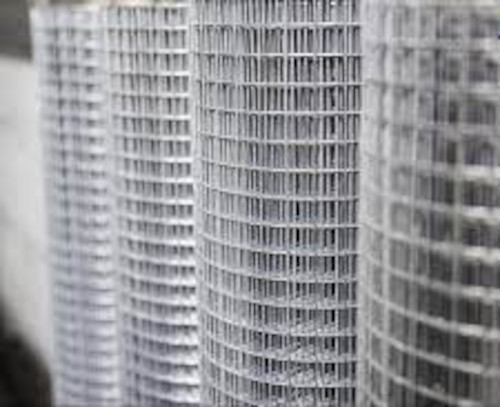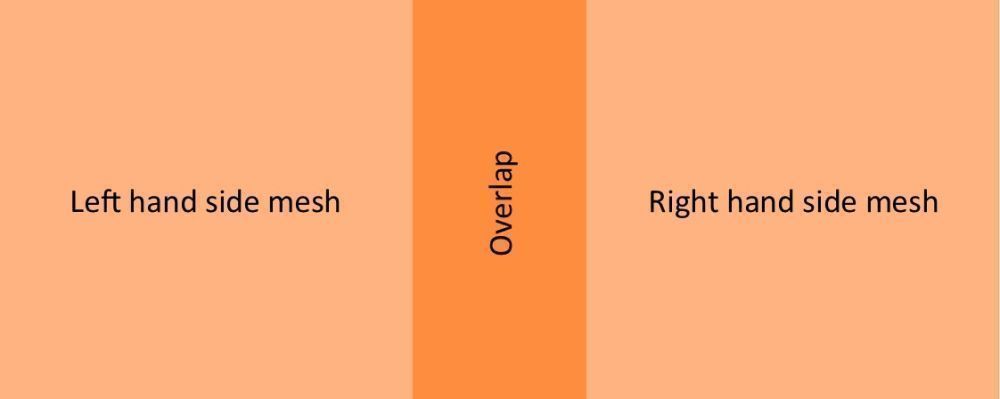
How to Join Welded Wire Mesh
Usually, if you are installing a panel style welded wire mesh, you don’t have to worry about joining panels. At the end of every panel, you will be installing a post, so all you have to do is connect the panel to the post using whatever clips, cover strips or other method the welded wire mesh fence system requires.
However, there are also welded wire mesh fences that are made with rolled welded wire mesh. Rolls don’t always terminate at a post, so you will need to join your welded wire mesh wherever one roll ends and the other must begin. Here’s how that’s done.
Not Like Chain Link
Generally, welded wire mesh is more secure than chain link fence, but the same reason that’s true is also the reason why you need to know how to join this type of fencing.
Usually, when you join two rolls of chain link mesh or diamond mesh as it’s also known, you simply “spiral” one of the woven wires that make up the mesh into the two adjacent rolls. This seamlessly “knits” the fence together.
However, since you can spiral wires in, you can also spiral them out, and that’s one of the weaknesses of chain link fencing. Welded wire mesh is welded at each wire intersection, which means you actually have to cut every wire if you want to make a hole in this type of fence. That makes it more secure, but it also makes it a little harder to join this type of mesh.
The Overlap
Very often, when you are reading a welded wire mesh fence specification, you will be told how much each roll of welded mesh needs to overlap the other.
Usually, this overlap will be at least 150mm or about 6 inches. In some cases, you might be required to overlap a little more, but that’s usually the standard.
It’s important to remember this overlap when you’re estimating a welded wire mesh fence too, because every roll will cover a little less than the full roll length.
The image below illustrates how the overlap when joining welded wire mesh will look.

Angled Overlaps
Overlaps and welded wire mesh joins don’t only happen at the end of a roll of mesh. If you have a welded wire mesh fence that will change elevation and follow a slope that’s not steep enough to warrant a tension post at the top and bottom of the slope, you will also need to angle, cut and join the angled mesh to the fence at the top and bottom of the slope.
This is one reason why it takes a little more skill and experience to work with rolled welded wire mesh fences. It doesn’t behave the same as chain link, so it’s a little trickier to install.
How to Join the Mesh
|
The last thing you need to know about how to join welded wire mesh is what to use to make the actual joins. There are several options for this. First, you can use tie wire. Either the pre-bent type of tie wire used in North America or coiled tie wires that you cut and twist as needed can work. Make sure your twists are bent back because they can catch on fabric or even cause cuts if they stick out from the fence. Another option is to use hog rings or heuller rings as they are sometimes known in parts of the world. These are pre-bent wire rings that are clamped closed using a special kind of pliers. The final option – and the one that is usually specified for high-security fences – is to use a pneumatic tool and special clips that are sometimes called Hartco clips. The tool looks like the one from Amazon to the right, and it works with a compressor to create a very tight and solid join. It costs a little more than your usual pliers, but can be quicker in trained hands, and does provide a stronger join. |
Your Fence Is Only As Strong As the Weakest Point
It’s important to remember that your fence is only as strong as the weakest point. So when you are doing things like joining welded wire mesh, it’s a good idea to use quality materials, leave the job to people with the right kind of skills, and use a few more tie wires, rings or clips than you think you need.


